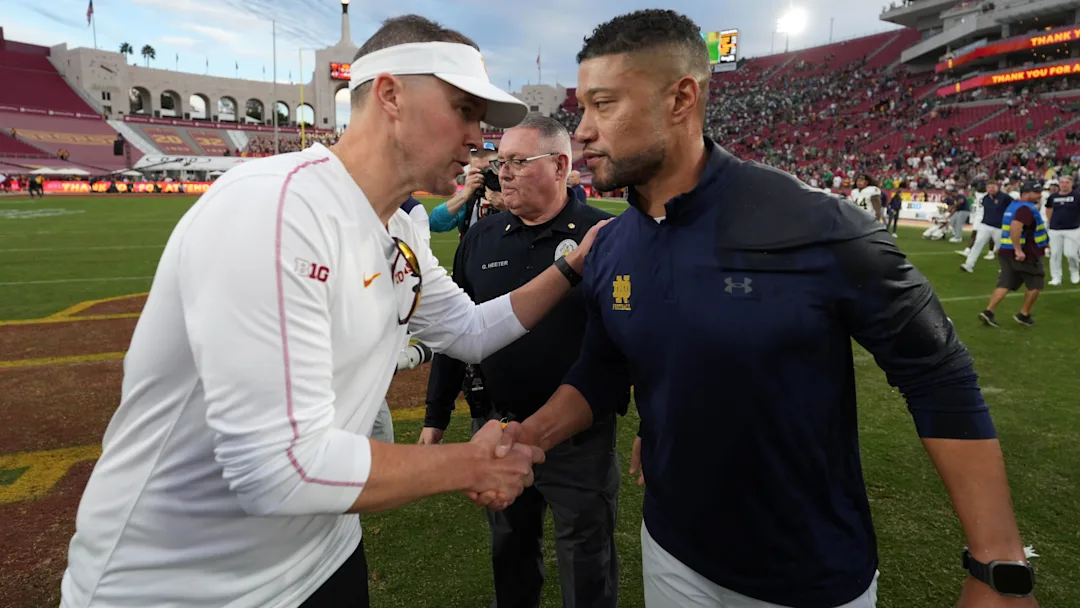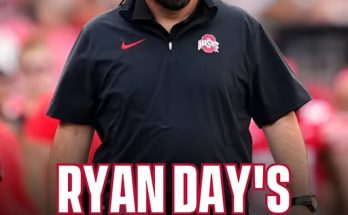The Notre Dame–USC rivalry is one of the most storied, historic, and deeply ingrained traditions in college football. For decades, these two programs have met almost every year, often on the grandest stages, battling not just for bragging rights but also for national prominence. However, with the evolving landscape of college football — including conference realignment, playoff expansion, and scheduling complexities — the rivalry’s continuity has been at risk. Fortunately, the USC Trojans now present a viable and compelling solution for ensuring that this iconic rivalry not only endures but flourishes in the new era of college football.
The importance of the Notre Dame-USC rivalry cannot be overstated. It transcends mere competition; it is a cultural event with deep emotional resonance for fans, players, and alumni alike. The rivalry has produced countless memorable moments, legendary players, and unforgettable games that have shaped the history of college football itself. The clash between these two programs, both with rich traditions and national followings, epitomizes the sport’s ability to unite disparate regions of the country through a shared passion.
In recent years, however, maintaining this annual game has become increasingly complicated. Notre Dame is an independent football program with a nationwide fan base, while USC is a member of the Pac-12 Conference, which has seen instability and questions about its long-term viability. Scheduling conflicts, the need to prioritize conference play, and the increasing importance of College Football Playoff (CFP) positioning have all put pressure on the rivalry’s future. The challenge has been how to preserve this classic matchup in a college football landscape that is rapidly changing.
USC, however, offers a unique solution that could not only save but enhance the Notre Dame rivalry. The Trojans’ position in the evolving collegiate athletics ecosystem positions them as a natural partner to keep the rivalry alive and thriving. There are several key reasons why USC stands out as the best option to ensure the Notre Dame rivalry’s continuity.
First and foremost, USC’s deep historical connection to Notre Dame makes the rivalry authentic and essential. The two schools have played annually for nearly a century, with the exception of a few years during World War II and other disruptions. This continuity is rare in modern college football, where many historic rivalries have been lost or diluted. The emotional and traditional bonds between USC and Notre Dame fans are powerful motivators to keep the rivalry intact. Unlike many other potential opponents, USC understands the significance of this game and the value it brings to both programs.
Secondly, USC’s geographical location complements Notre Dame’s identity and national reach. Notre Dame is a Midwestern powerhouse with a nationwide following, while USC represents the West Coast with a strong fan base in Southern California and beyond. This cross-country dynamic adds a layer of intrigue and national appeal to the rivalry. It’s a meeting of two football cultures that represent different regions but share the same high level of competitiveness and tradition. This bi-coastal flavor of the matchup appeals not only to alumni and fans but also to television networks and sponsors who recognize the value of the rivalry in attracting a broad audience.
Another advantage of USC as a partner is its commitment to maintaining a high level of competitiveness. USC is a program with a storied football tradition, multiple national championships, and a track record of producing NFL talent. The Trojans continue to recruit at an elite level, maintain strong coaching staffs, and aspire to compete for conference and national titles. This competitive balance ensures that games between Notre Dame and USC remain meaningful, intense, and unpredictable — essential ingredients for sustaining a rivalry that captivates fans year after year.
USC also offers scheduling flexibility that can accommodate Notre Dame’s independent status. Because Notre Dame is not locked into a conference schedule for football, the Fighting Irish have more freedom to craft their annual slate of opponents. This flexibility allows Notre Dame to schedule USC regularly, whether on the road or at home, in ways that fit both teams’ needs. Unlike other potential rivalries that may be restricted by conference commitments or other logistical challenges, the USC-Notre Dame matchup can be preserved as a marquee annual game, likely scheduled around a holiday weekend or other traditional time slots that maximize viewership and attendance.
In the context of the evolving College Football Playoff landscape, the Notre Dame-USC rivalry can also benefit from USC’s conference affiliation. As the CFP expands and the criteria for selection grow more complex, quality non-conference matchups become even more valuable. USC’s Pac-12 affiliation ensures that the Trojans play a challenging conference schedule, which, combined with their annual clash with Notre Dame, creates a resume that appeals to playoff selection committees. This dynamic incentivizes both programs to maintain the rivalry, knowing that a victory over a quality opponent from a Power Five conference adds significant weight to their postseason hopes.
Beyond football, USC and Notre Dame share broader academic and institutional values that contribute to the rivalry’s resonance. Both institutions have strong academic reputations, committed alumni networks, and a focus on developing student-athletes holistically. This mutual respect fosters a rivalry grounded in tradition and sportsmanship rather than mere competition. It’s this foundation that has helped the rivalry endure through decades of change and will continue to anchor it in the future.
Furthermore, the rivalry’s economic impact underscores the importance of keeping it alive. Games between USC and Notre Dame consistently draw large crowds and generate significant revenue from ticket sales, merchandise, and broadcast rights. The media attention surrounding the matchup boosts both programs’ profiles and enhances their ability to attract recruits, sponsors, and donors. Losing this annual game would not only be a blow to tradition but also to the financial health of both schools’ athletic departments. USC’s willingness to continue the rivalry helps protect this vital source of revenue and exposure.
The solution that USC offers extends beyond just the annual game itself. USC and Notre Dame have also collaborated on various initiatives to promote the rivalry’s legacy, including joint charitable events, alumni gatherings, and media productions that celebrate the history of their matchups. These efforts help keep the rivalry relevant and visible in an era where college football competes with numerous other entertainment options for attention. USC’s active engagement in these efforts demonstrates its commitment to preserving the rivalry in all its dimensions.
Moreover, the partnership between USC and Notre Dame serves as a model for how historic rivalries can adapt to the modern era. Rather than allowing conference realignments and scheduling difficulties to end a cherished tradition, these two programs show that with cooperation, flexibility, and a shared vision, it’s possible to maintain and even grow such rivalries. This approach could inspire other programs facing similar challenges to find creative solutions that respect tradition while adapting to new realities.
Critics may argue that the future of college football is increasingly dominated by conference play, playoff ambitions, and financial considerations that could marginalize independent matchups like Notre Dame-USC. While those factors are indeed powerful, the enduring popularity and significance of this rivalry suggest that it can survive and thrive if both parties prioritize it. USC’s willingness to work with Notre Dame to maintain the annual game demonstrates that tradition still holds value in college football’s shifting landscape.
Looking ahead, the Notre Dame-USC rivalry could be leveraged even more strategically to benefit both programs. For instance, the game could be positioned as a marquee national event each season, possibly rotating between prime-time television slots and prestigious venues. This would maximize exposure and ensure the matchup remains a highlight of the college football calendar. Additionally, expanding the rivalry beyond football into other sports and joint community initiatives could deepen the connection between the schools and their fanbases.
In conclusion, the USC Trojans offer a robust, practical, and meaningful solution to preserving the Notre Dame rivalry amid the changes reshaping college football. Their historical ties, geographic complementarity, competitive balance, scheduling flexibility, and institutional values make them the ideal partner for Notre Dame to continue this beloved tradition. Beyond mere nostalgia, the continuation of this rivalry has significant competitive, economic, and cultural implications for both programs. By working together, USC and Notre Dame can ensure that their rivalry remains a vibrant and defining feature of college football for generations to come. In a sport often defined by change, the Notre Dame-USC rivalry is a testament to the enduring power of tradition—and USC is the key to keeping that flame burning bright.



